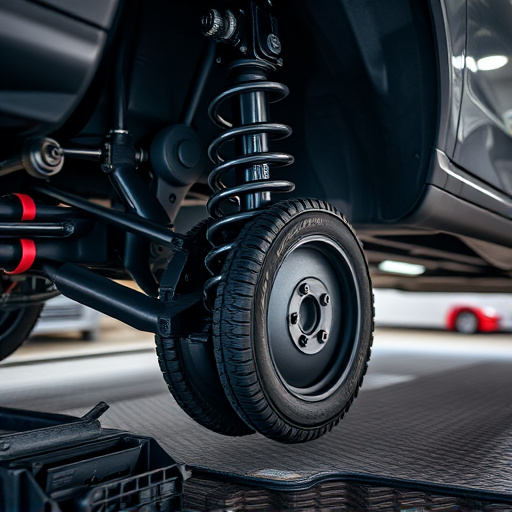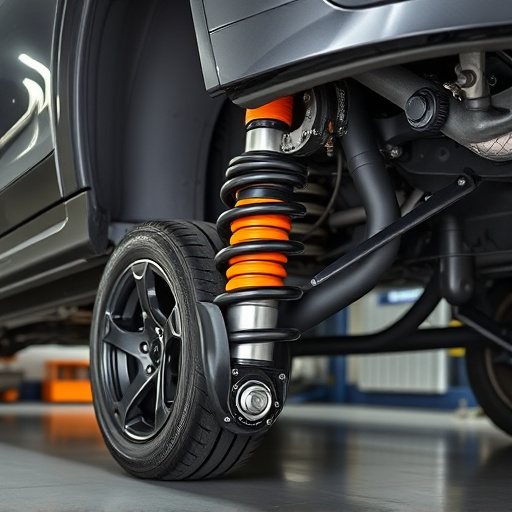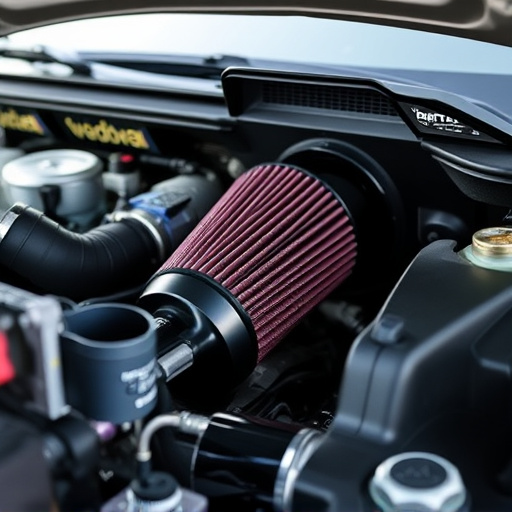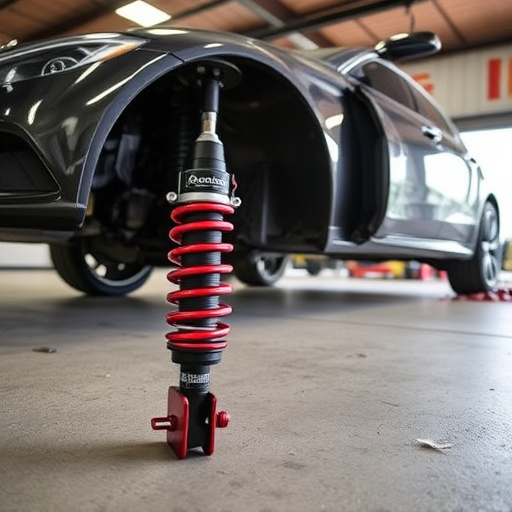The mass air flow (MAF) sensor is a crucial component in modern vehicles' engine management systems, ensuring optimal combustion and fuel efficiency by accurately measuring incoming air mass to regulate fuel injection. Regular maintenance and timely replacements are essential to maintain peak performance, as sensor inaccuracies can lead to inefficient operation, increased fuel consumption, and potential damage to related components. Upgrades to high-performance parts may also require MAF sensor replacement for optimal results.
Mass Air Flow (MAF) sensors play a pivotal role in modern vehicles’ engine management systems. By accurately measuring the volume of air entering the engine, these sensors significantly impact fuel economy and emissions control. This article delves into the MAF sensor’s functionality, exploring how it optimizes fuel efficiency by precisely metering airflow, thereby reducing fuel consumption. Additionally, we’ll discuss its critical role in lowering emissions, making it an essential component for cleaner, more efficient vehicles.
- Understanding Mass Air Flow Sensor Functionality
- Impact on Fuel Efficiency: How It Saves Gas
- Role in Emission Control: Reducing Pollutants Effectively
Understanding Mass Air Flow Sensor Functionality

The Mass Air Flow (MAF) sensor is a vital component in modern vehicles’ engine management systems. Its primary functionality is to measure the mass of air entering the engine, providing critical data for optimal combustion and fuel efficiency. The sensor works by detecting the density of the incoming air, which is then converted into a signal that helps regulate the amount of fuel injected into the engine. This precise control ensures the engine runs efficiently, maximising power while minimising fuel consumption.
A well-functioning MAF sensor is crucial for maintaining optimal fuel economy and reducing emissions. Over time, however, the sensor can become contaminated or wear out, leading to inaccuracies in air flow measurements. Such issues might require replacement or cleaning of the sensor and even upgrades to related components like air filter kits or performance exhaust systems, depending on the level of degradation. Proper maintenance and timely replacements ensure that your vehicle’s engine management system functions at peak efficiency.
Impact on Fuel Efficiency: How It Saves Gas

The mass air flow sensor (MAF) plays a pivotal role in enhancing fuel efficiency by accurately measuring the amount of air entering an engine. This data is crucial for the vehicle’s computer to calculate the precise mixture of air and fuel, ensuring optimal combustion. When the MAF sensor functions correctly, it allows engines to breathe efficiently, resulting in reduced fuel consumption. By optimizing air intake, the sensor helps engines run more smoothly, which directly contributes to better gas mileage—a significant benefit for environmentally conscious drivers and those looking to cut down on fuel costs.
Moreover, improved vehicle performance stems from this enhanced efficiency. With a well-calibrated MAF sensor, exhaust systems can operate more effectively, reducing backpressure and promoting smoother exhaust flow. This, in turn, enhances overall engine performance while also potentially allowing for the integration of high-performance parts that further boost output without compromising fuel economy.
Role in Emission Control: Reducing Pollutants Effectively

The mass air flow sensor (MAF) plays a pivotal role in modern vehicle emission control systems. By accurately measuring the amount of air entering the engine, it enables precise fuel injection, which is crucial for maintaining optimal combustion. This, in turn, directly impacts emissions reduction. In vehicles equipped with advanced engines and catalytic converters, the MAF sensor helps to ensure that the right amount of fuel is delivered, minimizing unnecessary fuel consumption and the subsequent release of pollutants into the environment.
By regulating air intake, the MAF sensor contributes to the overall efficiency of the exhaust system and intake components. It prevents excessive fuel from being burned, which can lead to higher emissions, especially in older vehicles or those with faulty sensors. This precise control over air-fuel mixture is a key factor in keeping pollutants like carbon monoxide (CO), nitrogen oxides (NOx), and particulate matter within acceptable limits, as mandated by environmental regulations. Thus, the MAF sensor is not just a component but an integral part of the vehicle’s eco-friendly credentials.
The mass air flow sensor (MAF) is a critical component in modern vehicles, playing a dual role in improving fuel economy and reducing emissions. By accurately measuring incoming air mass, it optimizes the air-fuel mixture, leading to more efficient combustion and reduced fuel consumption. Furthermore, its integral part in emission control systems helps minimize pollutants like carbon monoxide and nitrogen oxides. Understanding and maintaining these sensors is key to maximizing a vehicle’s performance and environmental sustainability.














